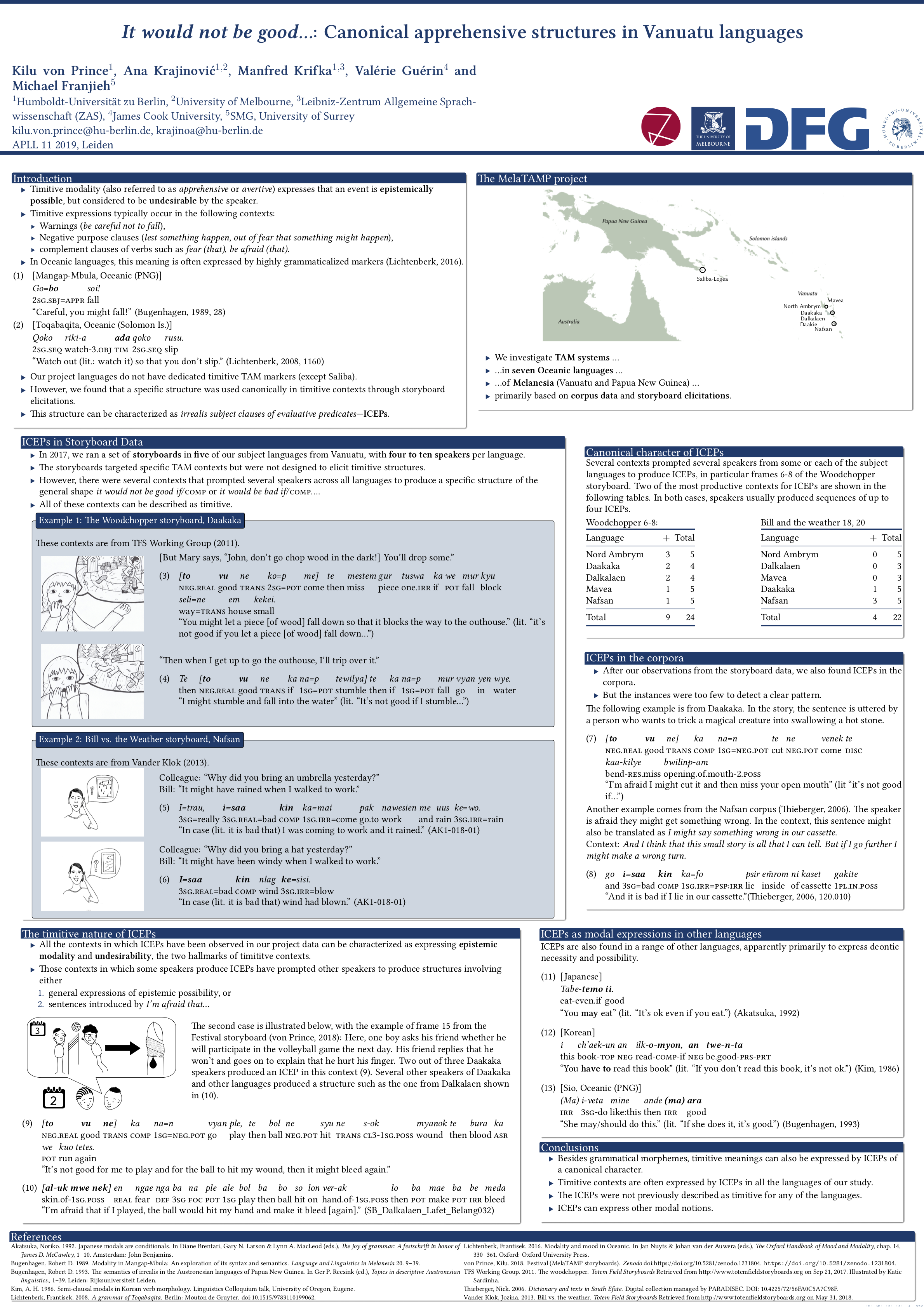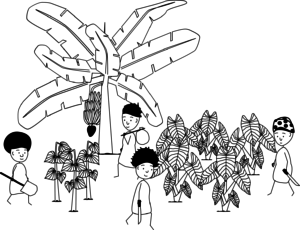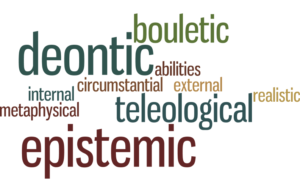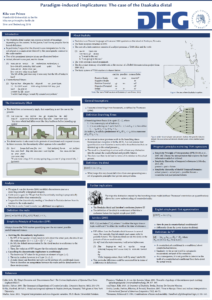I’m very excited about this year’s AFLA 2020. The organizers are doing a fantastic job at hosting it online. You can see the program and download all the slides here. There is also a youtube channel where all the talks have been posted. I haven’t been able to see all talks live so far, due to different time zones, but I have been very impressed with the quality of those talks that I have seen. It’s definitely worth taking a look. I used my slot to work on my greater narrative about how Oceanic languages can change our understanding about the relation between tense and modality, and between time and reality.
Tag: modality
Out now: Expressing possibility in two Oceanic languages
We can often choose between more basic, highly grammaticalized, ways to express a given meaning, and more verbose ways of doing so. Thus, in English, we may say “Brenda can catch the train” or “it is possible that Brenda will catch the train”, with quite similar interpretations. In my article with Anna Margetts, we argue that expressions of possibility in Daakaka and Saliba-Logea correspond to it is possible that in terms of their syntactic complexity, but to can in terms of their paradigmatic properties, frequencies and meaning. Look at the publication here or download the preprint.
APLL in Leiden
 My colleagues Ana Krajinović and Manfred Krifka are currently at APLL in Leiden to present our joint work on timitive structures in Oceanic, which have the shape it’s not good/it’s bad if… . Timitive modality is a category often found in Oceanic, which typically occurs in warnings (Watch out, you might fall!) or negative purpose clauses (You should take an umbrella, lest you get wet!). Download the poster here.
My colleagues Ana Krajinović and Manfred Krifka are currently at APLL in Leiden to present our joint work on timitive structures in Oceanic, which have the shape it’s not good/it’s bad if… . Timitive modality is a category often found in Oceanic, which typically occurs in warnings (Watch out, you might fall!) or negative purpose clauses (You should take an umbrella, lest you get wet!). Download the poster here.
Tagging tense and modality in Oceanic
 I just came back from an inspiring and informative trip to Saarbrücken. I gave a talk in the FEAST series about tagging tense, aspect, modality and polarity in Oceanic languages. Here are my slides for the talk.
I just came back from an inspiring and informative trip to Saarbrücken. I gave a talk in the FEAST series about tagging tense, aspect, modality and polarity in Oceanic languages. Here are my slides for the talk.
Storyboards for TAM expressions
 For our project, we primarily work with corpus data, but we also have funding to do further field work and elicit contexts that are rare or unattested in the corpora. As our primary method of elicitation, we have decided to use storyboards, which are short scripts accompanied by pictures.
For our project, we primarily work with corpus data, but we also have funding to do further field work and elicit contexts that are rare or unattested in the corpora. As our primary method of elicitation, we have decided to use storyboards, which are short scripts accompanied by pictures.
I have created the pictures for our stories in Inkscape. The stories and SVG source files are being made available on our project wiki. The SVG files can simply be customised, just credit the project and me with the original creation.
The future is what the universe wants
There was a remarkable small workshop on imperatives at ZAS last week that I was happy to be part of. It was a welcome opportunity to take up my work on potential mood directives in Daakaka and their relations to future assertions and embedded clauses. You can see my slides here.
Towards an ontology of modal flavours
 I’m still feeling warm and fuzzy from the wonderful workshop we had last week at the DGfS conference about modal flavours. The idea for this workshop had formed last year during the SIAS summer institute on the investigation of linguistic meaning, together with Ryan Bochnak and Anne Mucha. We were very happy to win Aynat Rubinstein as our invited speaker and get some excellent submissions from various subfields of linguistics. We gave an overview of background motivations and common themes of the talks in our introduction.
I’m still feeling warm and fuzzy from the wonderful workshop we had last week at the DGfS conference about modal flavours. The idea for this workshop had formed last year during the SIAS summer institute on the investigation of linguistic meaning, together with Ryan Bochnak and Anne Mucha. We were very happy to win Aynat Rubinstein as our invited speaker and get some excellent submissions from various subfields of linguistics. We gave an overview of background motivations and common themes of the talks in our introduction.
Poster for Sinn und Bedeutung 2016
 I’m excited about the upcoming Sinn und Bedeutung conference in Edinburgh. The program looks very promising and I’ll have an opportunity to discuss some of my latest thoughts on the Daakaka distal and modal semantics more generally. If you can’t come but would like to see my poster, here it is.
I’m excited about the upcoming Sinn und Bedeutung conference in Edinburgh. The program looks very promising and I’ll have an opportunity to discuss some of my latest thoughts on the Daakaka distal and modal semantics more generally. If you can’t come but would like to see my poster, here it is.
It was created with XeLaTeX, graphics with Inkscape, maps with GMT.
